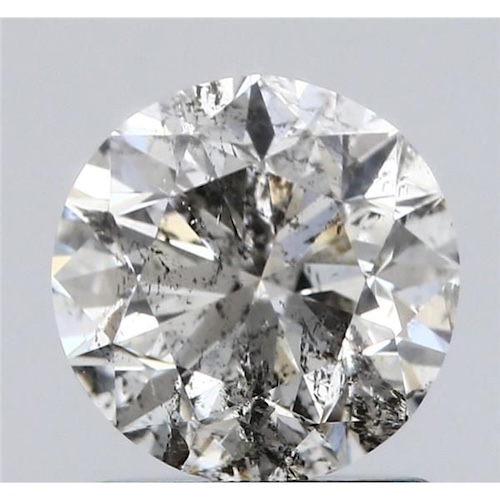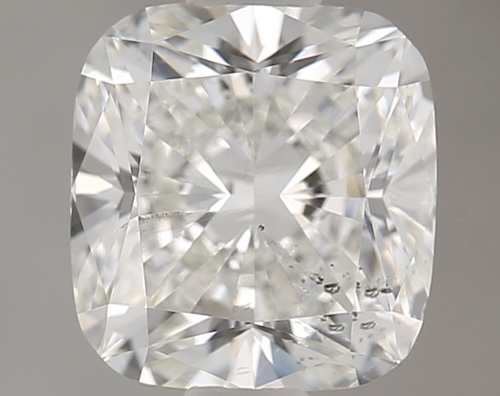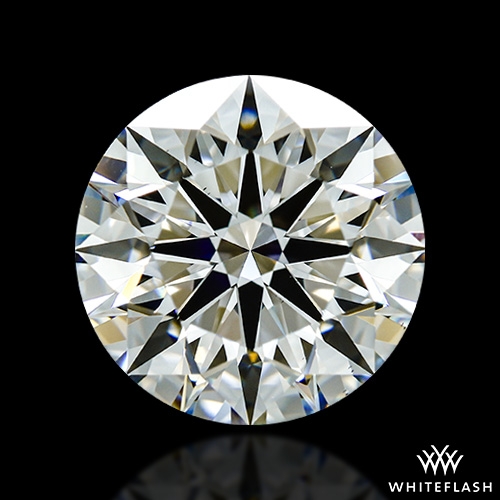Diamond Education
I1, I2 And I3 Clarity Diamonds
Diamonds are nature's marvels, each telling a unique story of its journey deep within the Earth. While many diamonds boast impeccable clarity, some come with their own set of inclusions and blemishes. These natural imperfections, though often seen as flaws, can sometimes be a testament to the diamond's unique history. Among the clarity grades, the I1, I2, and I3 categories are particularly intriguing. These diamonds, classified under the "Imperfect" clarity category by the Gemological Institute of America (GIA), possess inclusions that are evident under 10x magnification, which may influence their transparency and brilliance.
However, it's essential to understand that not all inclusions are created equal. While some might be discreetly hidden by a ring setting or appear as mere specks to the naked eye, others can affect the diamond's overall appearance and even its structural integrity. As we delve deeper into the world of I1, I2, and I3 clarity diamonds, we'll explore their characteristics, potential risks, and the beauty that can still be found within them. Whether you're a diamond enthusiast or someone looking to make an informed purchase, this guide aims to shed light on these often misunderstood clarity grades in a friendly and educational manner. Let's embark on this sparkling journey together!
What Is An I Clarity Diamond?
When it comes to understanding diamonds, clarity is one of the fundamental attributes that define their beauty and value. The clarity of a diamond refers to the presence (or absence) of internal or external imperfections, known as inclusions and blemishes, respectively. These can range from tiny specks or lines to more noticeable features.

GIA Clarity Scale
The Gemological Institute of America (GIA), a globally recognized authority in gemology, has established a comprehensive grading system to evaluate diamond clarity. Within this system, diamonds are categorized based on the visibility, number, size, nature, and position of these imperfections.
I Clarity Diamonds in the GIA Grading System
The GIA's clarity grading scale begins with Flawless diamonds (no inclusions or blemishes visible under 10x magnification) and extends to diamonds with noticeable inclusions. The "I" in I clarity stands for "Included" and represents diamonds with inclusions that are evident under a standard jeweler’s loupe at 10x magnification. Specifically:
- I1 Diamonds: These diamonds have inclusions that are typically visible to the naked eye. However, depending on their location and nature, some might be less noticeable when set in jewelry.
- I2 Diamonds: The inclusions in I2 diamonds are more pronounced and can affect the diamond's beauty and structural integrity.
- I3 Diamonds: This grade represents diamonds with even more significant inclusions, which not only impact their appearance but can also compromise their durability.
It's worth noting that grading the clarity of a diamond is a meticulous process. Each diamond is analyzed based on various factors related to its inclusions, such as its size, position, and type. Given the subjective nature of this evaluation, multiple graders often assess a diamond to ensure a consistent grading outcome.
In the world of diamonds, understanding clarity and its implications is crucial. While I clarity diamonds come with their set of challenges, they also offer unique stories and characteristics that some might find appealing. As with all diamond purchases, it's essential to be well-informed and to choose a stone that aligns with your personal preferences and values.
Do I1 Clarity Diamonds Offer Good Value?
The allure of diamonds often lies in their clarity, brilliance, and the stories they tell. When considering the value proposition of I1 clarity diamonds, one might be tempted by their often lower price points. However, is this reduced cost truly reflective of good value?
The Short Answer? No.
While every diamond has its unique charm, I1 clarity diamonds often come with noticeable inclusions that can detract from their overall beauty. If you come across a vendor offering I clarity diamonds at a seemingly attractive price, it's essential to approach it with caution. The reality is that these diamonds, especially those in the I1 clarity range, are of lower quality. Even for an I1 clarity diamond to be deemed acceptable for fine jewelry, it requires thorough and rigorous analysis. When it comes to something as significant as an engagement ring, where the diamond is the centerpiece, settling for an I1 clarity diamond might not provide the desired aesthetic or lasting value.
Should You Consider a Lab Diamond?
Given the concerns surrounding I1 clarity diamonds, prospective buyers might wonder if there are alternative options that offer better value without compromising on beauty. Enter lab-grown diamonds. These diamonds, created in controlled environments, possess the same chemical, physical, and optical properties as natural diamonds. The primary difference? They often come at a fraction of the cost and are ethically produced.
Conclusion
In the world of diamonds, clarity plays a pivotal role in determining value and beauty. While I1 clarity diamonds might seem like a budget-friendly option, they often fall short in terms of quality and aesthetic appeal. For those seeking a balance between cost and beauty, lab-grown diamonds present a compelling alternative. Whether you opt for a natural or lab-grown diamond, the key is to make an informed decision that aligns with your values, preferences, and budget. After all, a diamond, regardless of its origin, is a symbol of enduring love and commitment.



